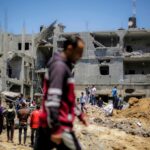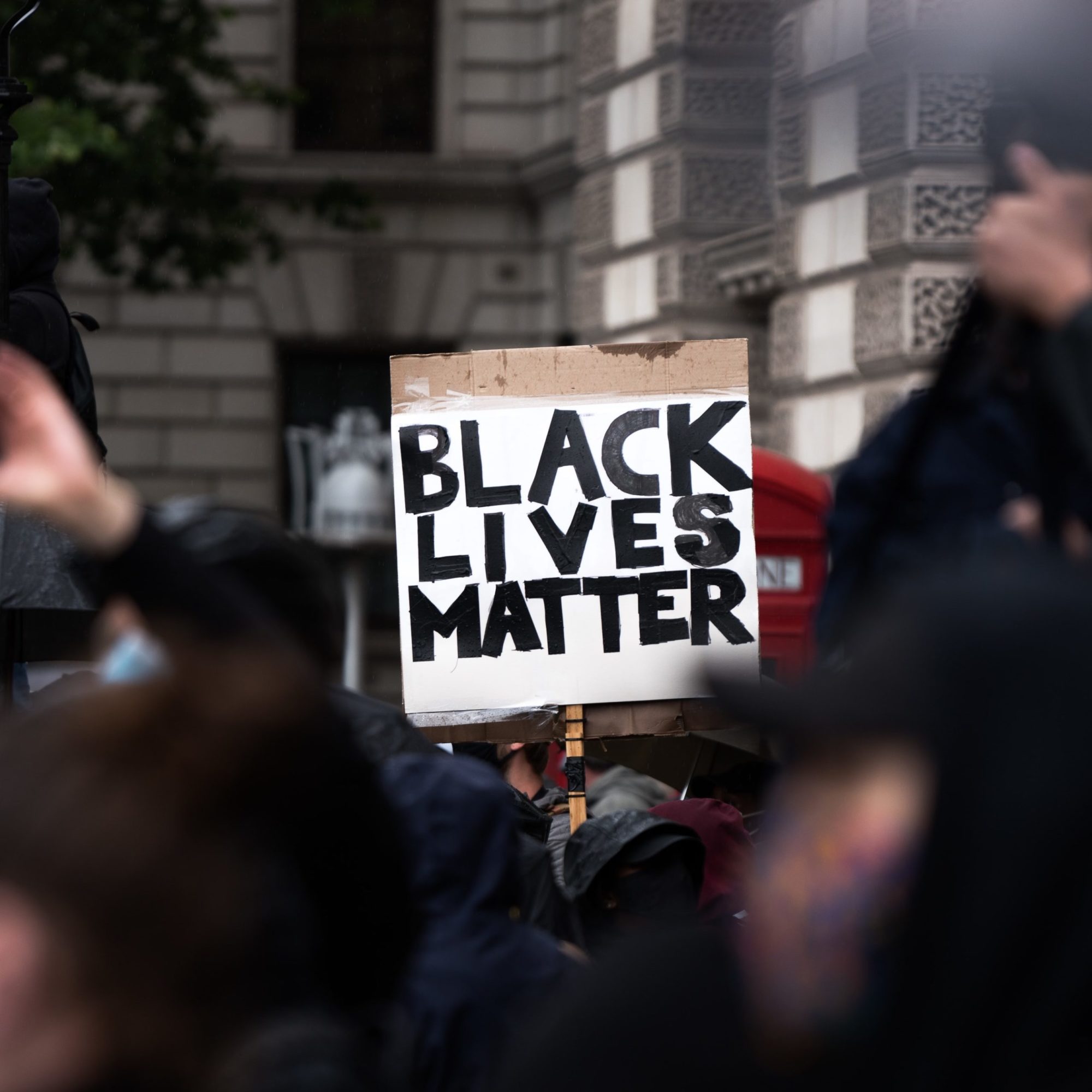July 13, 2022, was the nine-year anniversary of the acquittal of George Zimmerman, the vigilante that murdered 17-year-old Trayvon Martin. The acquittal was the birth of the Black Lives Matter organization, “whose mission is to eradicate white supremacy and build local power to intervene in violence inflicted on Black communities by the state and vigilantes.” Two years to the day after the acquittal of Zimmerman, we witnessed the murder of Sandra Bland, a young woman from Chicago killed in the custody of Texas police after a traffic stop. A few years later, the murder of George Floyd in police custody awakened the world to the trauma Black communities had known for generations, and led to a summer of protests in 2020.
Two years on, we have witnessed incidents that remind us why the continued fight for Black Lives Matter as a movement is essential to our cultural zeitgeist. On May 14, 2022, we saw the mass murder of ten Black people shopping in the Tops grocery store in Buffalo, New York, at the hands of a white supremacist vigilante, reminiscent of another white supremacist attack in a Charleston church seven years ago. A few weeks later, Jayland Walker was killed by the Akron police department. The video of over 40 bullets hitting his body after a “routine traffic stop” was eerily reminiscent of Laquan Mcdonald, who was gunned down in Chicago in 2014, and Amadou Diallo, who experienced a similar fate in New York City in 1999.
What makes these stories different is that after the summer of 2020, people were “learning and growing,” the media and systems “changing and adapting,” and yet, here we are. As vivid memories of the pain, anguish, and terror resurfaced in my mind — and where I couldn’t resist the temptation of hopelessly saying, “again?” — the conversation about these incidents was over. The speed of the media cycle and public consciousness to move past events like Walker’s murder and the Buffalo shooting remind us how systems in American society are violent, militaristic, and racist.
We are two years removed from that summer of “change” but we are still fighting the same demons. Black communities are constantly reminded that while people spoke about their “allyship” for Black Lives Matter, they were not prepared to become accomplices in this fight.
For many, they truly believed this was a moment, not a movement.
A HISTORY LESSON
The acts of domestic terrorism we have seen over the past few months are rooted in the fear of white supremacy’s dwindling power. In the Buffalo shooter’s manifesto, he espoused numerous “philosophies,” like White Replacement theory, oft-peddled by right-wing public media figures like Fox News host Tucker Carlson. In the commentary for the murder of the Walker, we heard the same narrative of “fear of Black man” by the police.
For too long, Black people have been living in war zones, not amongst each other but against the state and domestic terror, all for the right to simply exist.
These theories may be new to some but they have been entrenched in US culture and ideals for generations. While these racist ideologies and acts of surveillance, violence, and terrorism have been inflicted upon Black communities since enslaved people were brought onto the shores of this country, today’s current brand of domestic terrorism is a newly emergent and particularly deadly trend rooted in the United States’ militaristic culture.
After moments of deep protest, Black people have always experienced backlash from systems of power and authority. After the Long Hot Summer of 1967, where 159 race riots erupted in cities all across the United States, President Lyndon B. Johnson established the Kerner Commission to investigate the riot causes and provide recommendations for the future. The commission’s report found that not only was systemic poverty and institutional racism driving urban violence, but for many local policymakers and governments, their response to the protests was not trying to fix the social ills but rather “to train and equip the police with more sophisticated weapons.” These were the same tactics enacted by President Donald Trump in response to the Floyd protests of 2020. And President Joe Biden echoed the same idea in his 2022 State of the Union address where he declared, “We should all agree, the answer is not to defund the police. The answer is to fund the police. Fund them. Fund them!”
AREN’T BLACK PEOPLE WORTH PROTECTING?
When Dr. Martin Luther King Jr. reflected on the systemic ills of the United States, he noted “the triple evils of racism, economic exploitation, and militarism.” These evils still hold us tightly today. The United States is infamous for stepping in to help countries when it believes citizens are not being treated fairly, often referencing the use of the military to control populations or the threat of domestic terror by a single ethnic group. If the United States sees tanks in the streets of other countries, staffed with military police using rubber bullets or instances of domestic terror, and rushes to their aid, what does it say about how this nation views Black communities if the response to us is more policing and control? Does it affirm to the world that they do not view Black people as citizens, or as humans worthy of protection?
The seeds of imperialist, neocolonial, and militarized violence used by the United States and its citizens on Black people across the globe continue to bear fruit in our own backyard. For too long, Black people have been living in war zones, not amongst each other but against the state and domestic terror, all for the right to simply exist. Unfortunately, figures of militarized forces in state-sanctioned and supported violence in Black communities are nothing new. Images of police, vigilantes, and civilians alike in bulletproof vests, armed with military-grade weaponry with tanks moving through city streets, are memories from generations of Black communities, whether in their fight for equity and justice or merely existing within their own communities.
As a country, we spent months in 2020 having conversations, unpacking history, and committing to be better, but here we are. Are we any better? As conversations turn from one incident to one week to multiple years, we continue to see the commitment from citizens and politicians fade. These systems of injustice are designed to let the wind out of your sails, quell resistance to change, and hinder advancement of equity. But that’s why we must continue to fight. We cannot continue to have siloed conversations, only engaged in by those communities directly affected. People, politicians, and organizations must move on from bystander apathy and ally energy to become accomplices in the fight for equity and justice for all.
HOW TO RISE UP
It may be too late to remove the memories of tanks, raids, and rubber bullets or the mass riots and fires, or the modern-day lynching of children and adults alike, but we must make commitments to ensure those images are not etched into the minds of the next generation. We must enact policies that limit this militarization and criminalize the domestic terror on Black communities by the state and civilians alike. Rather than “funding” the police in these communities and investing $840 Billion in unnecessary military spending, including on the inflated nuclear weapons budget, we must reimagine and reinvest in social and community care.
Conversations and learning cannot be a one-time commitment, but rather a series of tangible actions that are deeply committed to creating systems of change. Standing on the sideline of this conversation is not an option, we are in a moment where equity and justice for all people is being stifled and stripped by systems of power. It is only when we commit to uplifting and engaging the most disenfranchised and marginalized communities that we can all rise.
The summer of 2020 is not a moment in time. It’s part of the movement for the equity of Black lives and deserves your undivided attention.
Mari Faines (she/her) is the Partner for Mobilization at Global Zero; a social justice, diversity & equity activist, and former podcast host. Her work specializes in nuclear intersectionality, conflict resolution, transitional justice, and racial and systemic disparities.














